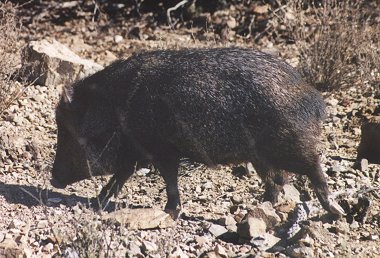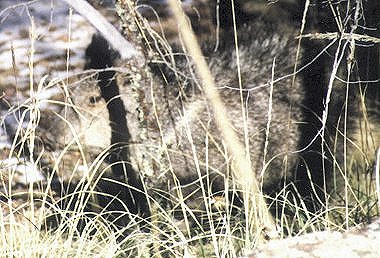Javelina are common throughout the Sonoran Desert
favoring saguaro-palo verde
 forests, and grasslands with mixed shrubs
and cacti. Javelinas travel in loose groups, feeding as they move through
an area. They are mainly herbivores and dig up roots and bulbs with their
snouts and sharp hooves and will eat prickly pear cacti, spines and all.
If the opportunity presents itself they will also eat dead birds or
rodents. forests, and grasslands with mixed shrubs
and cacti. Javelinas travel in loose groups, feeding as they move through
an area. They are mainly herbivores and dig up roots and bulbs with their
snouts and sharp hooves and will eat prickly pear cacti, spines and all.
If the opportunity presents itself they will also eat dead birds or
rodents.
|
Javelinas are sociable animals,
traveling with the same herd their entire lives. |
A javelina group is normally comprised of about 8-12
animals. They communicate with each other by scent and by using a series
of low grunts. An older, experienced female leads the heard and determines
when to bed down, feed, or go to water. Javelinas have no defined
breeding season; the babies, usually twins, can be born any month of the
year. Not many predators other than a mountain lion will attack a grown
javelina, but the babies may become prey to coyotes, bobcats and other
animals.
 |

